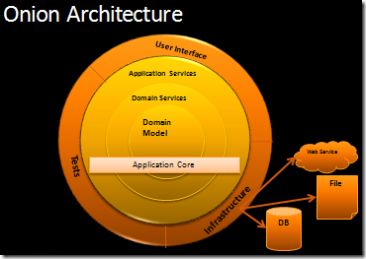I’m curious to hear people’s opinions on implementing the Onion Architecture in an Elixir application.
Jeffrey Palermo, the originator of the Onion Architecture, states that it is “unashamedly biased toward object-oriented programming, and it puts objects before all others”. However, there has been some discussion on implementing the Onion Architecture in Functional Programming.

The diagram depicts the Onion Architecture. The main premise is that it controls coupling. The fundamental rule is that all code can depend on layers more central, but code cannot depend on layers further out from the core. In other words, all coupling is toward the center. This architecture is unashamedly biased toward object-oriented programming, and it puts objects before all others.
Has anybody in the Elixir community implemented the Onion Architecture in Elixir or another functional language? Has anybody implemented the Onion Architecture in an OOP language? If you have, what are your thoughts on implementing this architecture?
Do you think this architecture could be useful to the Elixir community? Is using this architecture a bad idea? A good idea? A waste of time? Do Elixir apps tend to exhibit this architecture anyway?
I’m looking forward to hearing people’s thoughts!






















